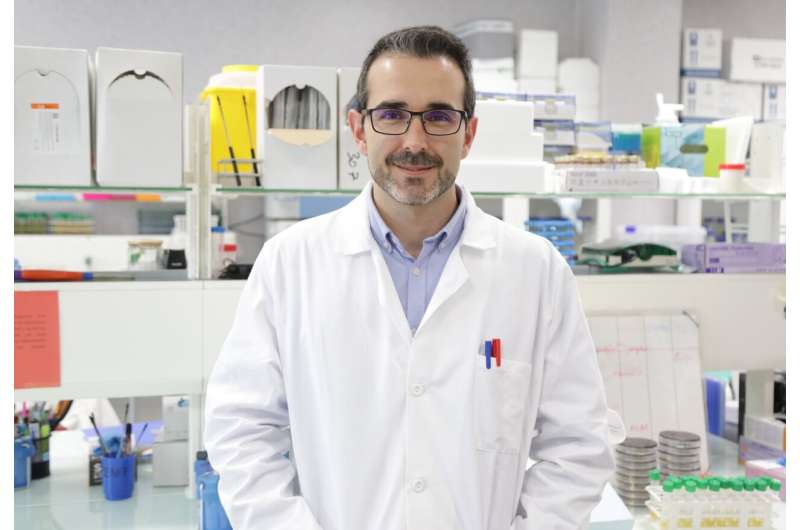New findings about the bacteria that causes listeriosis

Listeriosis is a zoonotic disease of food origin that can cause, both in the human species and in animals, symptoms of gastroenteritis, meningitis, bacteremia and miscarriages. The pathogen that causes this infection is the Listeria bacteria. Juan José Quereda, researcher with a Ramón y Cajal contract and professor at the CEU Cardenal Herrera University (CEU UCH), where he leads the research group on Intracellular Pathogens, has been conducting research in this field since 2011.
Professor Quereda has just published new advances, in collaboration with researchers from the Pasteur Institute in Paris, the University of Iowa and the CNB-CSIC in Madrid, on the mechanisms of transmission of this pathogen, its genetic characteristics, antibiotic resistance and its seasonal presence in dairy farms, which can contribute to designing more effective measures to curb its proliferation and develop new treatments against infection.
Together with researchers from the Pasteur Institute in Paris and the University of Iowa, Professor Quereda has participated in the study of Listeriolysin S, a bacteriocin synthesized by this bacterium to facilitate intestinal colonization, altering the microbiota, and also promoting its expansion to other organs. In this study, led by Dr. Javier Pizarro Cerdá and published in the journal Proceedings of the National Academy of Sciences (PNAS), they have found the mechanism of permeabilization of the bacterial membrane mediated by Listeriolysin S that facilitates its dissemination in the organism.
Another of the recent findings led by Professor Quereda, lead researcher of the group Intracellular Pathogens: Biology and Infection, has focused on the seasonal nature of the occurrence of Listeria in dairy farms, in a study carried out together with researchers from the Department of Animal Production and Health of the CEU UCH, including the ProVaginBIO Group, led by Professor Ángel Gómez Martín.
The analysis of the epidemiology and genetic diversity of Listeria in 19 farms has made it possible to detect that the presence of the bacteria varies at different times of the year: it increases in cows in winter and in sheep in winter and spring. The study has shown that farms can be a reservoir of hypervirulent variants of Listeria, which makes it advisable to reinforce hygiene measures, especially in periods of greater risk of prevalence. It is also advisable to avoid the consumption of untreated raw milk to eliminate the risk of pathogens such as Listeria, which dies at temperatures above 65 °C.
More information: Jazmín Meza-Torres et al, Listeriolysin S: A bacteriocin from Listeria monocytogenes that induces membrane permeabilization in a contact-dependent manner, Proceedings of the National Academy of Sciences (2021). DOI: 10.1073/pnas.2108155118
Carla Palacios‐Gorba et al, Ruminant‐associated Listeria monocytogenes isolates belong preferentially to dairy‐associated hypervirulent clones: a longitudinal study in 19 farms, Environmental Microbiology (2021). DOI: 10.1111/1462-2920.15860
Juan J. Quereda et al, Pathogenicity and virulence of Listeria monocytogenes: A trip from environmental to medical microbiology, Virulence (2021). DOI: 10.1080/21505594.2021.1975526
Journal information: Environmental Microbiology , Proceedings of the National Academy of Sciences
Provided by Asociacion RUVID


















